The Maxim Guide to Israel, the Mediterranean’s Ultimate Travel Destination
Everything you need to know about one of the hottest vacation spots on earth. #VisitIsrael

Presented by Visit Israel
Israel is a land of countless dichotomies: ancient and modern, religious and secular, natural and man-made.
As one of the fastest-developing countries in history, Israel has found ways to celebrate its past while always looking toward the future, offering the best of all possible worlds for both visitors and those who call it home.
Here, your ultimate insider’s guide to experiencing the land of milk and honey.
Tel Aviv, the Miami of the Middle East
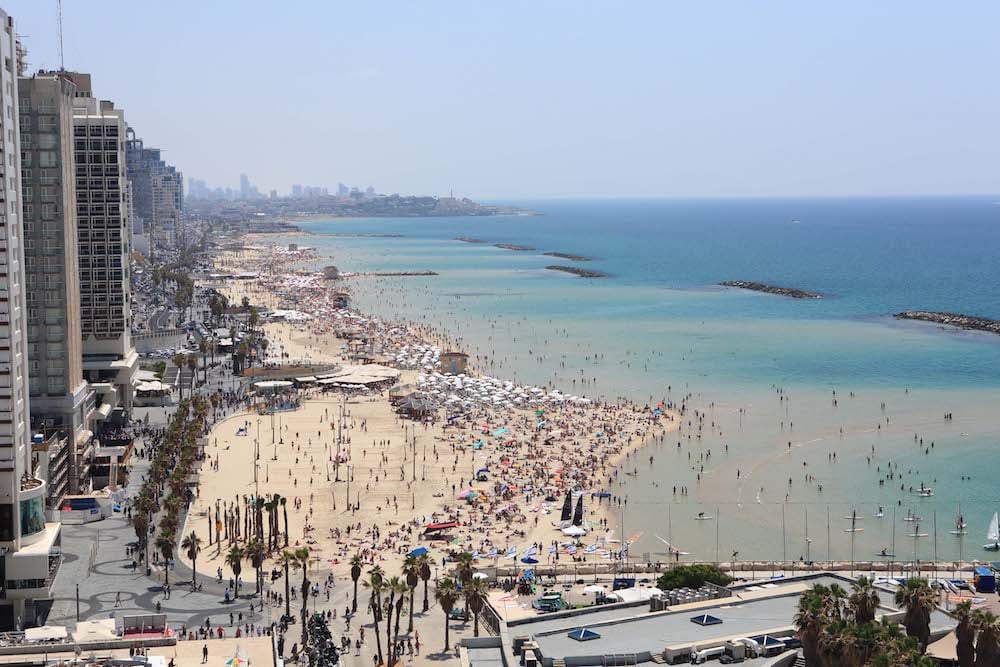
While Jerusalem has a history that dates back to antiquity, Tel Aviv is the new kid on the block. Well, relatively speaking. Founded in the early 20th century, Tel Aviv, known as the White City for its light-colored buildings, has emerged as a world-class hub of business and culture. With a food and art scene rivaling any found in Europe and the Middle East, and a prevalence of Bauhaus-influenced architecture (introduced from prewar Germany in the 1930s), this melting pot of cultural influences makes Tel Aviv truly unique, and a premier destination for those looking for an atypical luxury vacation.
To start, Tel Aviv is a walking city. Take a stroll or bicycle ride on the Shlomo Lahat Promenade, which runs along the beachfront, or Sderot Rothschild, Tel Aviv’s tree-lined main thoroughfare. When the weather is nice, it seems like the entire city heads to one of the numerous nearby beaches. The most popular is the stretch composed of Gordon, Frishman, and Bograshov beaches, centrally located near many of the hottest hotels.
For a beautiful crowd of tanned bodies looking to party, the Hilton/Top Sea Beach is a must-visit, with surf lessons provided by the Topsea Surfing Center and refreshments available from a beachfront bar and restaurant. Finally, walk all the way down the beach toward Jaffa, one of the oldest ports in the world. Jaffa Beach is super-relaxed, and usually less crowded; without wave breakers, it’s a popular spot for surfable waves when the wind picks up.
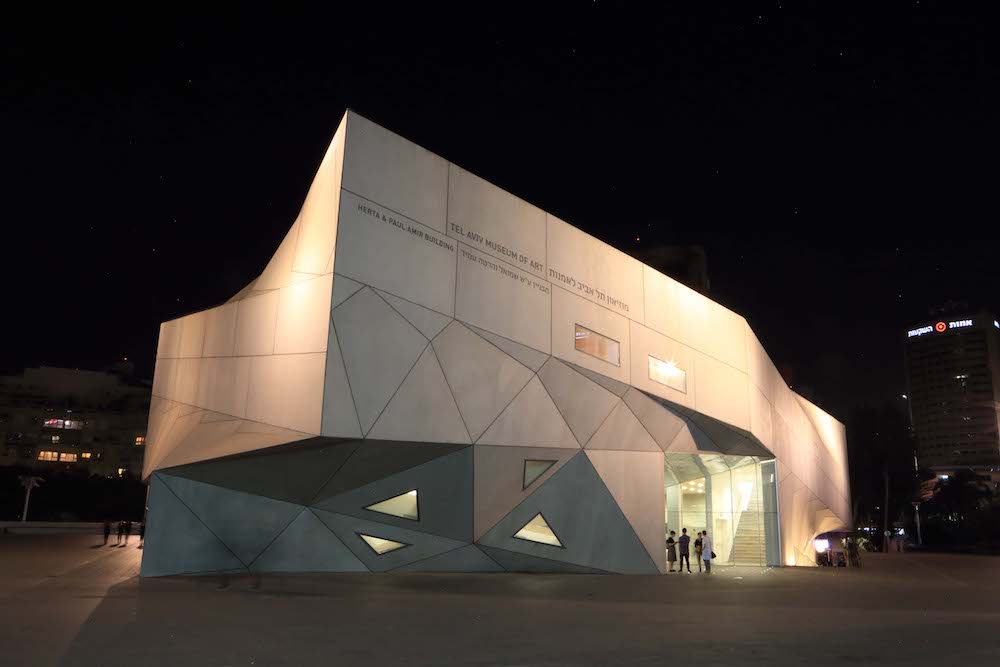
While the beaches are a major draw, opportunities for cultural exploration abound. The Tel Aviv Museum of Art is architecturally striking enough to rival the masterpieces held within, while the Israel Philharmonic Orchestra—a first-rate ensemble that was formed in the 1930s to give Jewish musicians banned from performing in Europe a way to continue their craft—is experiencing a resurgence. It recently named 29-year-old Israeli conductor Lahav Shani as its new music director, the first changing of the guard in 50 years.
For a laid-back afternoon, check out the Carmel Market‘s impossibly colorful selection of candies, fruits, and spices (heaven-sent for any- one with an Instagram account), or HaYarkon Park, Tel Aviv’s answer to New York’s Central Park and one of the largest in Israel. Named for the Yarkon River that meanders through it, HaYarkon’s 16 million annual visitors can enjoy tropical gardens, extensive manicured lawns, an aviary, a petting zoo, sports facilities, lakes, a water park, and an outdoor concert venue that has hosted a who’s who of musical superstars like the Rolling Stones, Madonna, Justin Timber- lake, Justin Bieber, Britney Spears, and Rihanna.
https://www.instagram.com/p/BiHlDJagCQM
As enjoyable as Tel Aviv is during the day, the city truly comes alive when the sun goes down. Tel Aviv’s enviable nightlife offerings ensure that every visitor can party somewhere that has the vibe and musical selection they desire. Located in the Hotel B Berdichevsky, Bellboy Bar offers expertly crafted cocktails in a refined space.
Entry is limited to those who are 25 or older, and grants revelers access not only to the main bar but also to Butler, a 19th-century-themed speakeasy hidden within, offering a unique experience to the 15 lucky guests who fit in this cozy space. You can move from a speakeasy to Speakeasy, one of the best indoor/outdoor nightspots to be found in the city. With a large outdoor terrace overlooking Tel Aviv’s skyline, it’s one of the premier places for the beautiful, young residents of the city to gather for drinks and small plates of Mediterranean eats, ideal for meeting friends or perhaps a sexy stranger.
Imperial Craft Cocktail Bar offers no-nonsense, Asian-inspired cuisine, but the main attraction is the drinks menu. Crafted by local bartenders determined to restore the reputation of the cocktail, creatively named offerings like the Pepper Spray, Thyme to Kill, or a Gold Fashioned (with a genuine gold-dust finish) are sure to draw thirsty visitors and local bartenders alike.
For those looking to cut loose and hit the clubs, be aware that in Tel Aviv, many of the best nightlife options are seasonal. The Clara Club, an outdoor bar and nightclub overlooking Dolphinarium Beach that’s convenient to most parts of the city, is open during the summer months. After sundown, the city’s hottest DJs drop beats as the suntanned, beautiful people of Tel Aviv shift from the beach to the dance floor, cooled by the gentle ocean breeze as they dance well into the night.
https://www.instagram.com/p/BjClu51F0vf
Of course, when you visit Tel Aviv you’ll need a place to stay. Fortunately, the city has a myriad of choices for luxury accommodations, ranging from five-star brand-name offerings to the über-popular boutique hotels that have become prevalent in recent years. The current hot spot is the Norman Tel Aviv, with its refined decor and ambience instilling a sense of early 19th-century luxury. Beyond the hotel’s impressive rooms and suites, the Norman offers a citrus garden, a terrace with sweeping views—ideal for morning coffee—and its pièce de résistance, a stunning rooftop pool and sundeck where guests can relax while overlooking the city and the sea.
The Setai Tel Aviv, located in a meticulously restored Ottoman-era prison building near the Jaffa Port, offers luxurious rooms and suites and stunning views of the port and the Mediterranean coastline, best experienced from the hotel’s jaw-dropping pool. Meanwhile, the Dan Tel Aviv is easy to find with its recognizably colorful facade and prime location in front of the city’s most popular beaches. Where others stress classical luxury, the Dan focuses on modern amenities and design, and offers both indoor and outdoor pools to its guests, ideal for taking in idyllic panoramas of the Mediterranean.
—Keith Gordon
Israel’s Diverse Culinary Scene
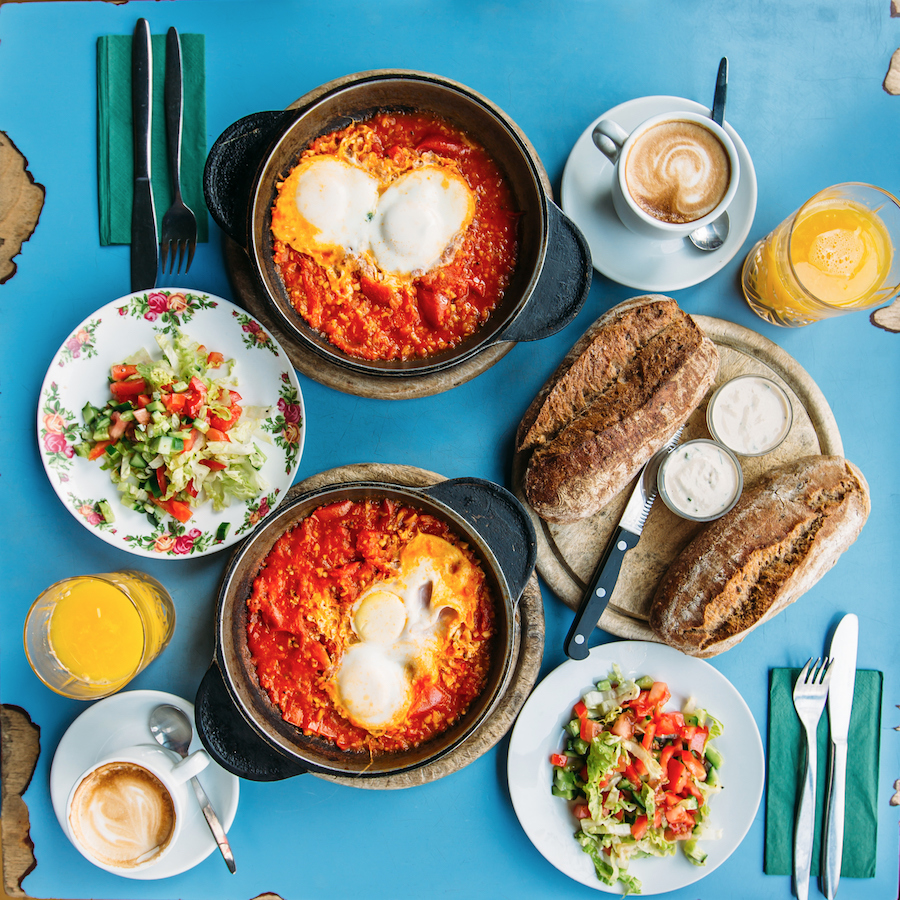
While some might equate Israeli food with “Jewish food,” the fact is that the cuisine, and the country, is far more diverse than that: In addition to world-class kosher offerings, you might be surprised to learn that nonkosher options abound. Israeli food is like its people: a truly modern mash-up of ethnicities and viewpoints. There are restaurants serving Libyan spicy fish, North African shakshouka, Turkish shawarma, and platters heaped with Middle Eastern mezze—not to mention a recent influx of places to grab a killer taco. And it owes its popularity in part to the fact that this is exactly how so many of us want to eat these days: flavor-rich, family-style meals that represent comfort and camaraderie, and serve as a reminder to enjoy life.
Ohad Salomon, the executive chef of Tel Aviv hot spot CoffeeBar (which is not actually a coffee bar, but rather an Italian, Levantine, and French bistro famous for its goose confit), believes that eating out—and getting together with friends—has become an important source of pleasure. While there are any number of incredible, high-end restaurants in Israel, it’s worth checking out the markets for an equally exciting culinary experience. “Six or seven years ago, Michelin-star restaurants were the thing,” says Salomon. “But you don’t have to go to restaurants to eat a good meal. Some of the best food in Israel is street food.”
https://www.instagram.com/p/BhcYEJSBMOd
In Jerusalem, the hottest scene is the Machane Yehuda market, a century-old conglomeration of stalls with vendors selling dried fruit or spices that has recently transformed into a social destination where young people stand around drinking local wine at open-air bars. The market is also home to some of the city’s buzziest restaurants, notably Crave, which offers Western-style food on the menu and American rock & roll on the sound system, and Steam Kitchen & Bar, serving up sandwiches on Chinese buns and local craft beer. Dessert at Machneyuda, an über-cool, upscale market favorite, is semolina cake with tahini ice cream, followed by table dancing; late-night revelry (and more table dancing) happens at sister restaurant Yudale, a tapas-style bar.
Up north, in Acre, chef Uri Jeremias is a pioneer of the country’s relaxed take on fine dining at Uri Buri, housed in an Ottoman-era stone building. Here, guests come to watch afternoons turn into evenings over platters of just-caught fish, carafes of local wine, and unexpected pairings (anchovy-and-peach ceviche, caramelized tilapia with sweet-and-sour beetroot) before retiring to Jeremias’s nearby 12-room hotel, Efendi, for a night spent luxuriating on Egyptian cotton sheets.
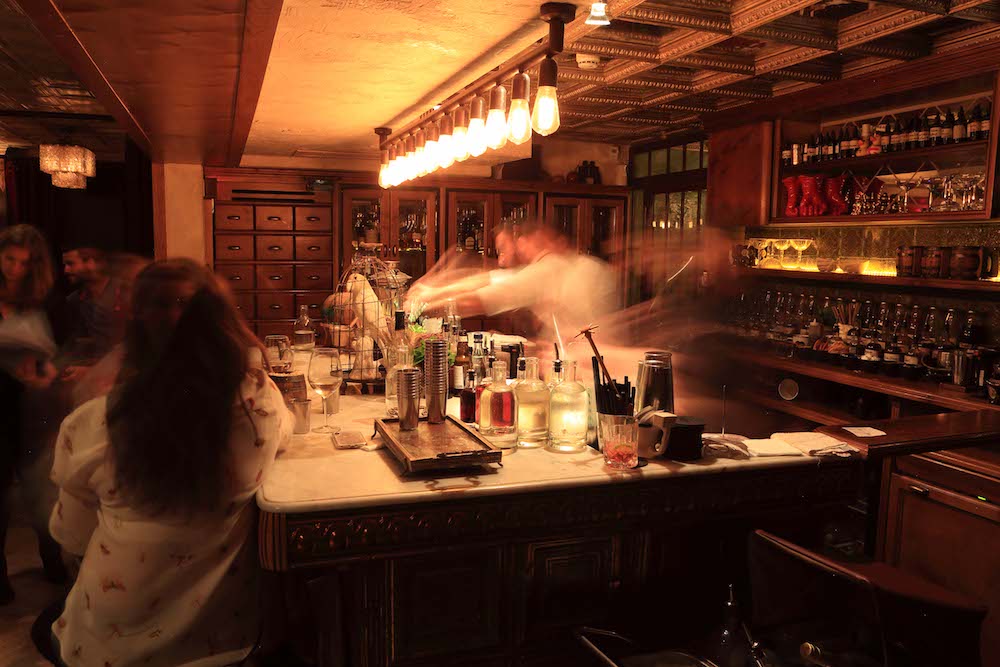
The wine scene, too, places an emphasis on the creative and the homegrown, with Israel’s best winemakers using native grapes like argaman, an Israeli cross between souzão and carignan, as well as ancient varietals like hamdani, dabouki, and jandali, to produce wines that can hold their own against any from the Loire Valley, according to Elad Shoham, the head sommelier at Tel Aviv’s Montefiore Hotel. The best reds come from wineries up north, including Golan Heights Winery, where the volcanic soil is ripe for producing rich pinots and cabernets, but Shoham says the news is in the rieslings coming out of Sphera Winery and the sauvignon blanc from award-winning winemaker Eran Pick’s Tzora Vineyards in the Judean Hills. For one of the country’s few sparkling wines, and homemade goat cheese, head to the boutique Pelter Winery.
Even in relatively flashier Tel Aviv, comfort and festivity define the scene. At the taverna-style Ouzeria, you might dine on mezze platters of roasted root vegetables and beet ravioli in between shots of arak poured from a communal carafe; Blue Sky by Meir Adoni specializes in panoramic views of the Mediterranean and a pescatarian menu that combines North African and Mediterranean influences. At the exclusive HaSalon, which is only open on Wednesday and Thursday nights, tomato-obsessed celebrity chef Eyal Shani spends the earlier part of the evening holding court over an open kitchen, and the latter half presiding over a restaurant-wide dance party.
But the fun isn’t reserved for the evenings. At the city’s Carmel and Levinsky markets, block after block of vendors deal in halvah, marzipan, and mutabak, often made from generations-old family recipes. Wash it all down with an artisanal soda from Café Levinsky 41, where owner Benny Briga will labor over your homemade kombucha, sweetened with guavas plucked from a tree in his parents’ backyard. “That’s the thing about Israel,” says Salomon. “It’s about the old and the new equally. We honor tradition. But we’re always looking forward, with hope, because you have to.”
—Alyssa Giacobbe
Jerusalem, an Ancient Capital With Modern Luxury
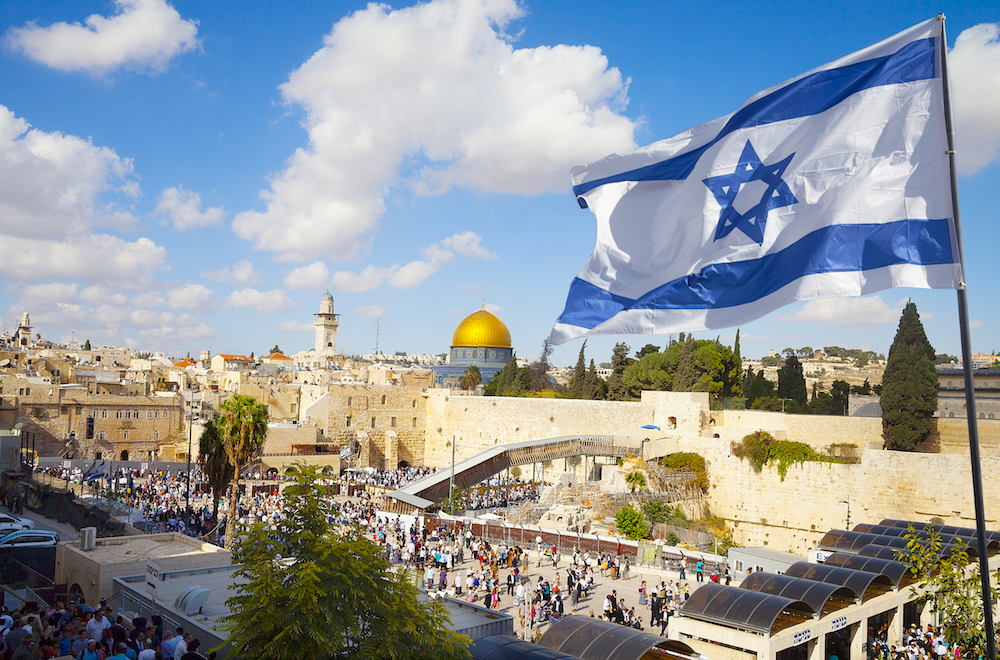
For thousands of years, Jerusalem has remained a city of immense geographic, political, and religious significance. Control over the city has changed hands countless times over the centuries, whether through crusade, conquest, or negotiated treaties, and the city is marked by this history, from the Western Wall and the Dome of the Rock to its ancient Roman ruins. But Jerusalem also serves as the multicultural capital of a modern, thriving nation, making it one of the most interesting cities in the world to visit and a must-see on any trip to Israel.
Exploring Jerusalem’s rich history is synonymous with a visit to the city, home to some of the world’s most holy places in Judaism, Christianity, and Islam. Famous tourist activities include placing a note in the crevices of the Western Wall, a solemn visit to the World Holocaust Remembrance Center, Yad Vashem, and a meandering tour of the old marketplace, Machane Yehuda (a.k.a. the Shuk), where shoppers revel in the energy and aromas. For history buffs, the City of David, an archaeological park consisting of ruins dating back to the founding of the city itself, is a dream come true. Let the expert guides on-site take you on an interactive trip back in time, as they lead you through tunnels, water-storage infrastructure, and even the ruins of mansions that once belonged to the richest families of King David’s era.
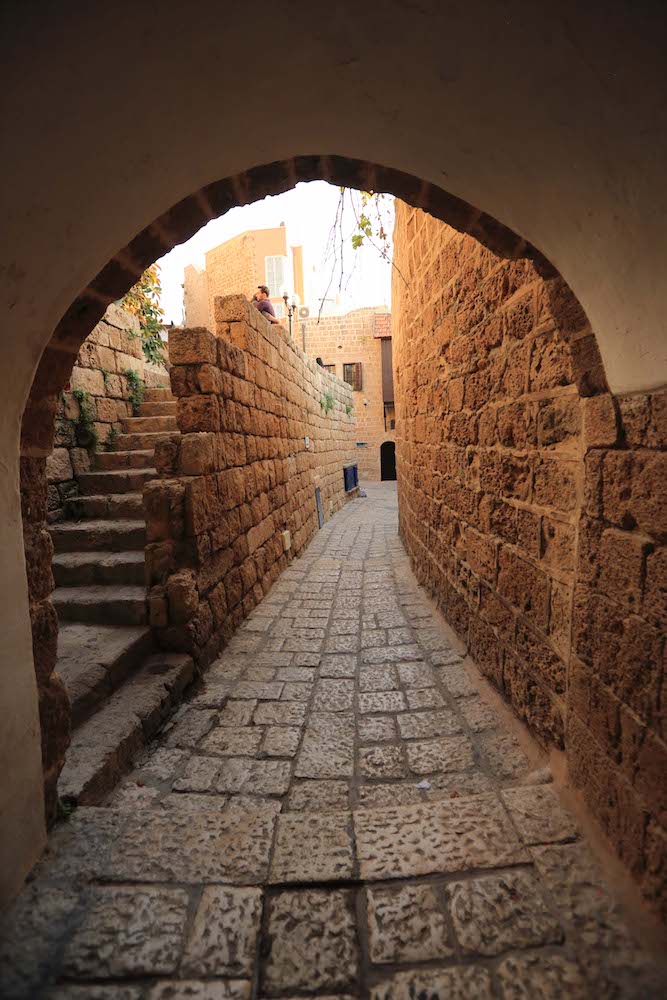
While known for its impressive ancient ruins, Jerusalem is not just for the historically curious. Ben Yehuda Street is closed to traffic, creating an oasis for pedestrians to casually stroll, shop, and eat. You’ll find everything from charming cafés and lively sports bars to clothing shops and art galleries along this pedestrian mall. Visitors can also stay at a new five-star modern hotel or eat at a world-class restaurant on the cutting edge of global culinary trends. It’s this balance between the city’s past and its luxe, modern refinements that can make a trip to Jerusalem so unique.
While the world-renowned King David Hotel has earned its reputation for housing world leaders and business titans in five-star accommodations, Jerusalem now offers numerous options for those seeking uncompromised luxury. The Mamilla Hotel features stunning rooms, a world-class spa with an indoor pool, and proximity to the historical sites of the city, with a rooftop restaurant from which to savor the views, while the Orient Jerusalem Hotel, part of the Isrotel group, offers 39 of its 200-plus rooms in a painstakingly restored 19th-century Templar heritage building.
In addition to its selection of the most desirable suites in the city (the Presidential Suite is a relatively good value at under $4,000 per night), the Orient also possesses something special: one of the only rooftop pools overlooking the city’s landmarks. Finally, the Leonardo Plaza Hotel provides some of the best views to be had of both the New and Old City. The Executive King Solomon Suite, on the 19th floor, offers incredible views from both the balcony and the bathtub, and guests can host their own dinner parties with a dining room that seats 10 guests.
https://www.instagram.com/p/BjrD7P9gJ4Z
Once the sun sets, head to the areas around the city center for some of the best barhopping you’ll find anywhere. Start near Zion Square and Jaffa Street to check out popular spots like The Sira or Toy Bar, before making your way toward Machane Yehuda, which turns from marketplace to nightlife destination each evening. For music lovers, establishments like Yellow Submarine, Birman, and Gatsby Cocktail Room offer evenings filled with rock & roll and jazz, swing, folk, and funk.
While there’s no wrong time to visit Jerusalem, knowing what to expect in terms of weather and availability can help you make the most of your trip. Many visitors aim for spring or fall to take advantage of the beautiful, sunny weather. Despite the heat, summer is also popular—but unlike its coastal neighbors, in landlocked Jerusalem it’s more difficult to cool off quickly, so be aware when booking your trip. Winter visitors will find cooler, rainy days, which has its own appeal, and fewer crowds. The high and low seasons for tourism are heavily tied to religious holidays like Passover or Christmas, so book well in advance if you’d prefer to tour the country during these times.
—Keith Gordon
Haifa, a City That Works and Plays
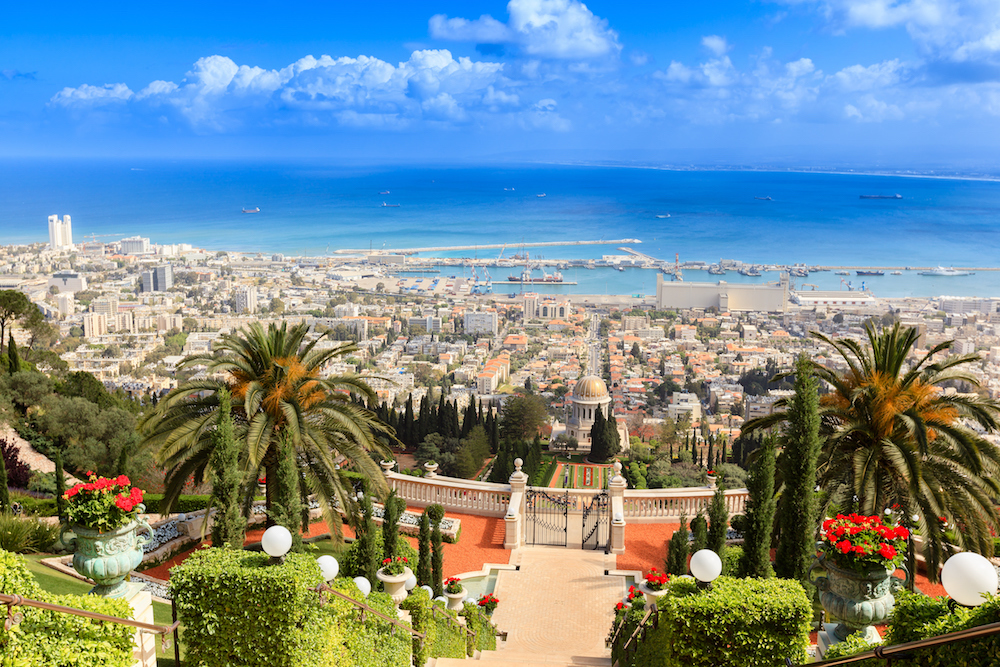
It’s commonly said that in Israel, Jerusalem prays, Tel Aviv plays, and Haifa works. While an oversimplification, it is true that Haifa, the nation’s third largest city, is a hub for Israeli business and industry. But there’s more to Haifa than its population’s work ethic and busy port. The most popular tourist attraction is the Bahá’í World Center, a UNESCO World Heritage Site.
Set on the slopes of Mount Carmel, the center is stunningly beautiful, with perfectly manicured gardens and dramatic sweeping vistas of the Mediterranean. At the base of these gardens is the German Colony, a neighborhood of meticulously restored Templarera buildings; a plethora of restaurants and cafés line the main road that leads to the nearby coastline. The city is a great place to stay while checking out what else Northern Israel has to offer, such as Galilee, Nazareth, or the Golan Heights.
The largest sailing yacht in the world, Sailing Yacht A is the estimated $450-500 million brainchild of Russian billionaire Andrey Melnichenko. The 468-foot “sail-assisted motor yacht,” which recently passed through Haifa, was designed by Philippe Starck. Yacht A features the three largest carbon-fiber masts in the world—at more than 300 feet above the waterline, they’re taller than London’s Big Ben. The ship possesses eight decks, a helipad, and its most unique feature, an underwater viewing pod molded directly into the keel. Sailing Yacht A is in good company in Haifa: The chairman of the Haifa Port announced his intention to add a superyacht dock to accommodate the numerous massive, private yachts that have been making Haifa a port of call.
—Keith Gordon
Israel, the Next Great Whiskey Capital
https://www.instagram.com/p/BY2vp08n5WG
Our insatiable thirst for whiskey made in every far-flung corner of the world leads us to perhaps one of the least likely destinations we could have expected. Water of Life, meet the Holy Land, as Israel now boasts a flourishing whisky scene on the cusp of garnering major international attention for all the right reasons.
“You can really see the growing interest of the Israeli crowd in unique and special whiskies,” says Tomer Goren, a man who knows a thing or two about the subject. He’s the head distiller at Milk & Honey, the country’s first whiskey distillery.
Planning for the distillery began in 2012, with distillation commencing in 2015, and thus far it has released two limited-edition, experimental single malts. In mid-2019 Milk & Honey will unveil its Founders Edition, funded via an Indiegogo crowdfunding campaign, while at the end of next year a larger-scale offering will be available for the public.
https://www.instagram.com/p/BY77SfpnwRq
To get Milk & Honey off the ground, the team received guidance from the late Jim Swan, Ph.D., a renowned whiskey consultant and Master Distiller who became particularly well-known for his aptitude in the art and science of whisky production and maturation in hot climates such as Taiwan. And you could say it gets a bit steamy in Israel, too. “Dr. Swan’s contribution to the distillery was crucial and will accompany us and our products throughout our development in the future,” Goren says.
In addition to Milk & Honey, there are a handful of other distilleries now producing whiskey across the country, including the Jerusalem Distilling Company, Pelter Distillery, and The Golan Heights Distillery, with at least two more working on their debuts—Edre’i Malthouse & Distillery and Legends Distillery.
“Counting Edre’i amongst the first Israeli distilleries is a privilege and an honor,” says Yechiel Luterman, the founder and distiller. Luterman had been a lawyer in Montreal, but opted to make aliyah, or immigrate to Israel, with his family.
The move offered a rare opportunity to pursue a personal passion—his love of single malt whisky. “It’s also very exciting to get in on the ground floor in a field you just know is going places on the world whisky stage,” Luterman says. “However, my favorite part of being amongst the first is the originality. There’s the promise of looking back years from now, taking pride in the knowledge that I’ve created something authentic—authentically Israeli.”
To do so, not only is he using local barley, he’s even malting it himself, taking control of the entire operation. “First and foremost is the desire to put out a whisky that’s a true product of the land of Israel, as opposed to simply being a product assembled in the state of Israel,” Luterman says.
https://www.instagram.com/p/Bh55SGZn3tQ
Weary desert travelers will find there are also a number of compelling bars in Israel to satisfy their yearnings for the spirit. In Tel Aviv, there’s the Norma Jean bistro bar and its 250 whiskies, along with The Whiskey Bar Museum, stocking a staggering 1,000 varieties while also hosting assorted workshops and tastings, and offering a members club. In Jerusalem, consider a visit to Glen Whiskey Bar for a dram from its collection of several hundred bottles.
It’s all part of Israel’s suddenly emerging whisky scene. “People said I am crazy, and that to start a [new] industry in a country is crazy, and impossible, and that I am doomed to fail,” Goren says. “Yet we did a great job, and now I am looking at an industry that’s growing. I am full of pride that I accomplished something that very few people have done.”
—Jake Emen
Tel Aviv’s Legendary Nightlife
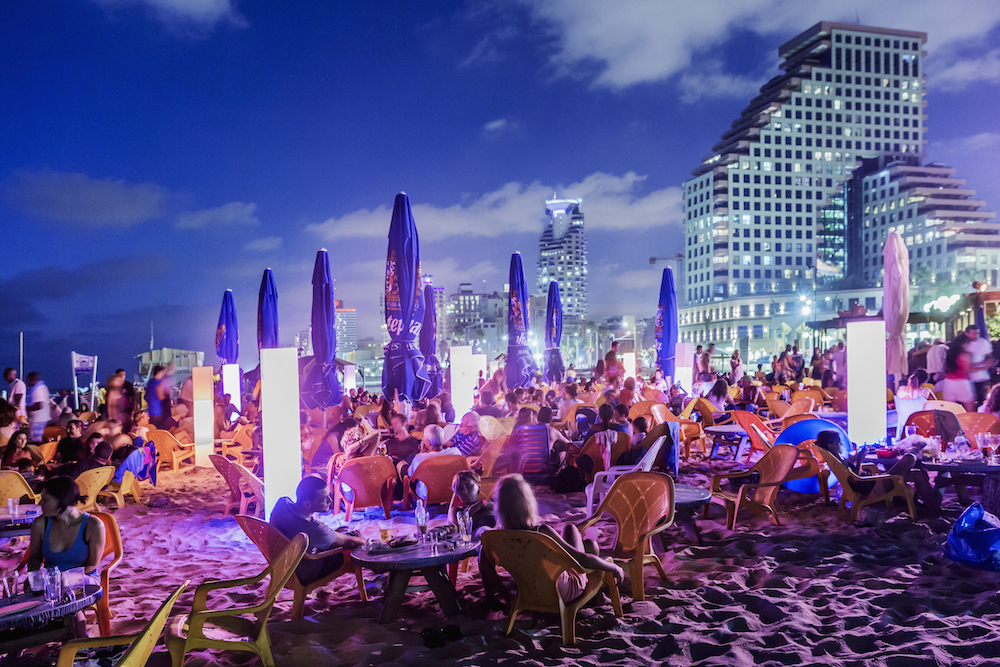
Yotam Goldman was 13 when he began hanging around the record shops of Tel Aviv’s perennially hip Shenkin Street, then slowly worked his way up: handing out flyers, taking busboy shifts, and playing house parties when his mentor DJs couldn’t make a gig. By 17, he was spinning full-time as DJ Yogo.
He started with hip-hop, but as the city evolved, so did he, spinning house, techno, and trap, eventually pioneering the electronic scene that came to define Tel Aviv’s early days as a party city drunk with freedom—or something like it. “Back in the mid-’90s, the club scene was very big, as in lots of people, large venues,” Yogo says. On a typical night in those days, clubs might have seen 3,000 revelers at a time.
In 1995, though, Rabin was assassinated, “and the bubble kind of got blown,” says Yogo. “People started to leave Tel Aviv or stay home.” The club scene moved underground; the musical tastes turned European. The birth of raver culture led to more intimate gatherings, often literally in people’s basements. But eventually, the political situation eased up and Israeli artists who had gone to study abroad in the U.S., Europe, and the Middle East began to come back, bringing with them a variety of sounds and inspirations that helped shape the scene to come. Yogo cites Red Axes, a post-punk Israeli duo who decamped to Amsterdam, and Mo Rayon, who was schooled in electrophonic trip in Berlin, as two of the most influential—and still very much part of the culture even today.
Meanwhile, those artists who decided to stay in Tel Aviv, like Rabo & Snob, who serve up a mix of ’80s-inspired Middle Eastern and Western sounds, and producer and percussionist Alek Lee, have, over recent years, helped the city develop its own distinct, new wave–heavy, homegrown dance sound, especially as the basement scene fell away. Underground is now virtually extinct, says Yogo; the newer venues that have emerged are more diverse, like The Block, which became known for its analog sound system, and Alphabet Club, where Yogo and some friends partnered with a web platform called the Boiler Room to bring the nightlife experience beyond the club walls.
Formats have continued to shift: Venues like new hot spot Herzl 16, where Yogo regularly deejays, favor more shows and special events—”not clubby; more like an experience,” he says—while daylong parties like Midburn (a sort of Israeli Burning Man), the Doof Festival (three days of music and camping on the beaches of Galilee), and the Tamar Festival, in the Negev Desert, increasingly take clubgoers beyond city limits. “Israel has so many beautiful locations,” says Yogo. “And it’s a very different feel when you are outside.”
The most international in-town scene remains at The Breakfast Club, where clubgoers dance until dawn to an eclectic mix of funk, rock, hip-hop, and new rave. In fact, says Yogo, eclectic may always define the Tel Aviv music and club scene, because these days you never know what, or who, the night will bring. He routinely sees clubgoers from 18 to well into their 40s, and locals mixing seamlessly with tourists. “The difference now,” says Yogo, “is that people are proud of their sound and don’t try to hide that they’re Israeli…Now it’s like, ‘I come from Tel Aviv and I’m proud of it.’ And you can hear that in the music.”
—Alyssa Giacobbe
An Oasis in the Negev Desert
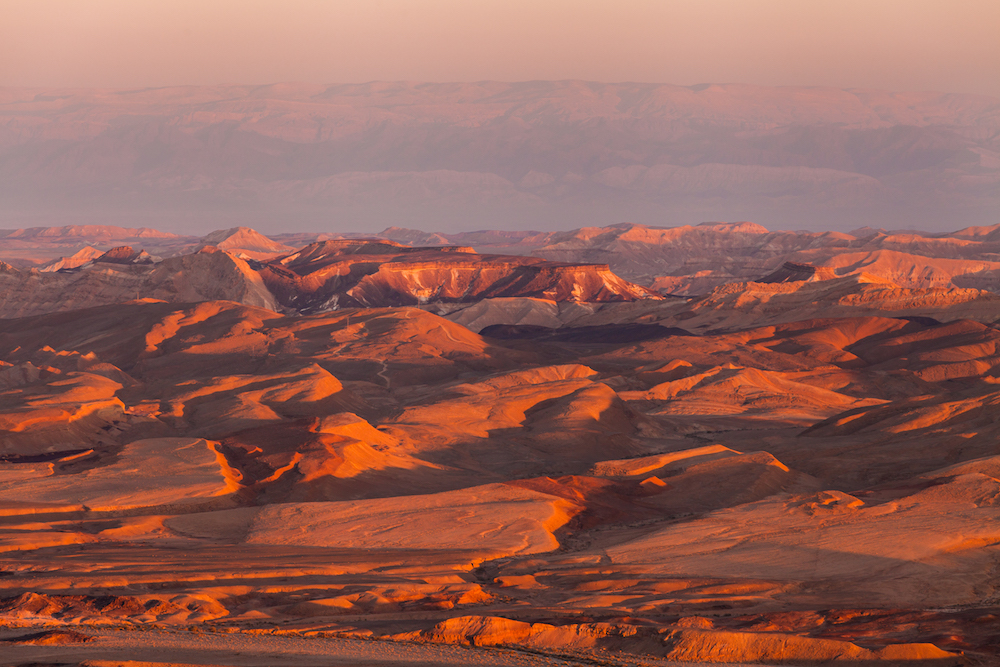
Deserts can be surprising places, with scorching days under a hot sun and freezing nights on the cold sand. The Negev Desert is a place of such dualities, with stunning vistas and infinite horizons contrasting with one of the harshest terrains on earth.
Visitors can choose their own adventure for a desert excursion: There’s Timna National Park, a world-renowned geologic site with gorgeous multihued rocks and sand, and Ein Avdat, an oasis formed by a freshwater spring that meanders between vertical walls of soft chalk.
Check out the imposing flat-topped mountain fortress of Masada, a monolith rising out of a seemingly endless stretch of desert (it’s the site of both King Herod’s fortress and the ill-fated last stand of Jewish rebels fighting the Romans two-plus millennia ago).
There are other UNESCO World Heritage Sites in nearby Avdat, Mamshit, and Shivta, and Ein Gedi, another oasis (complete with a waterfall), is popular with visitors and makes an ideal midday retreat from the desert’s sun and heat.
For those seeking a respite from the elements, the five-star Beresheet Hotel, overlooking the Ramon Crater (Israel’s Grand Canyon), and the Dead Sea resort town of Ein Bokek are the perfect places to wash off the dust and sand of the desert and enjoy some pampering at the area’s most luxurious spas.
—Keith Gordon
A Tech Boom That Gives Silicon Valley a Run for Its Money
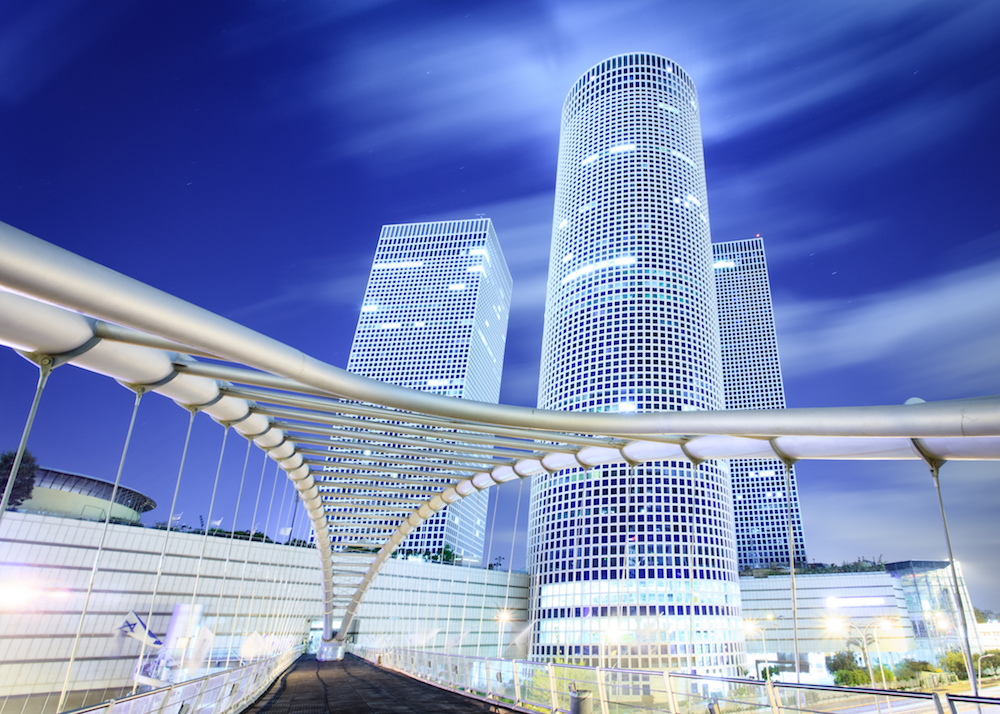
Everyone’s familiar with Silicon Valley, but if you haven’t heard of “Silicon Wadi,” you will soon enough. Just as the San Francisco Bay area transformed itself into the epicenter of technological entrepreneurship, Israel (and especially Tel Aviv) has become an outsize player on the global stage, particularly in areas related to the military, cybersecurity, artificial intelligence, and big data—no small feat for a country the size of New Jersey, with a population just about equal to New York City’s.
Israel has enthusiastically cultivated its up-and-coming business leaders and their enterprises, helping establish itself as the new hot spot for those wanting to create the next Google or Facebook. In recent years, it’s given the tech world apps like Moovit, Fiverr, and Waze, and is primed to become an even bigger influencer on the international stage.
“Israel has become a global focus of innovation over recent decades, with 7,000 startups and 1,400 net new startup companies joining each year,” explains Uzi Scheffer. “All indexes show the leadership of Israeli innovation. We are third in the World Economic Forum Innovation index; first in the world in venture capital investments as a ratio of GDP; and first in the world in R&D investments as a ratio of GDP.”
Scheffer is the CEO of SOSA, an “open innovation platform” founded in 2014 by 25 of the leading Israeli high-tech investors and entrepreneurs. SOSA connects entrepreneurs and their startups with each other, as well as with global corporations and investors, creating a network through which a young entrepreneur can seek out advice from mentors, assistance from collaborators and fellow entrepreneurs, or investment from both large companies and individual investors. Now, working with some 8,500 startups and 150 multinational corporations and potential investors, SOSA is at the epicenter of Israel’s technological revolution.
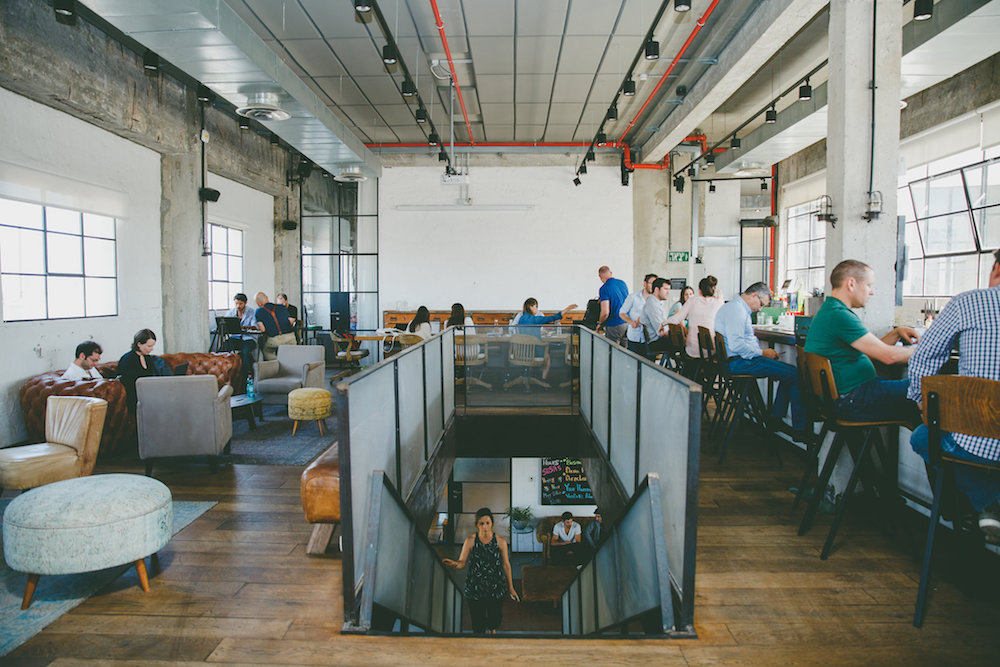
Scheffer cites Israel’s history as a motivating factor for its entrepreneurial spirit: “Being a small country with limited natural resources and small market size led us to focus on innovation in order to constantly find new solutions and ways to develop our country,” he says. There are also cultural influences that encourage such expertise. The vast majority of citizens serve in the Israel Defense Forces, which helps young Israelis to mature at an early age. Israel’s military is not only technologically advanced, but also includes the elite 8200 signal intelligence unit, which has produced countless entrepreneurs, like Wix cofounder Avishai Abrahami. This secretive unit encourages a steady supply of world-class technical minds that have spent years solving complex problems under immense stress in life-or-death situations, a pressure cooker that produces the best tech entrepreneurs.
But Israel’s success, made famous in Dan Senor and Saul Singer’s best-selling book Start-Up Nation, goes beyond the armed forces. According to Scheffer, its progress can also be attributed to the nation’s investment in the professional development of its youth at a very young age, in science departments at all universities, and in a solid foundation of research-focused technology. There are also government initiatives, such as the Yozma fund, which gave a boost to Israeli tech firms back in the 1990s, in addition to grants, tax plans, and the Innovation Authority, which is tasked with supporting the advancement of industrial research and development as well as facilitating conditions for startups and investors.
It took less than a century for Israel to develop its current status as a modern, prosperous country, tackling the challenges of starting a groundbreaking business empire as quickly as possible. “We are a land of immigrants,” Scheffer says. “People who take more risks and are not afraid of failure, who do not give up and try time and time again.” That’s just the way it is with a startup nation.
—Keith Gordon
The Dead Sea, a Natural Luxury Spa
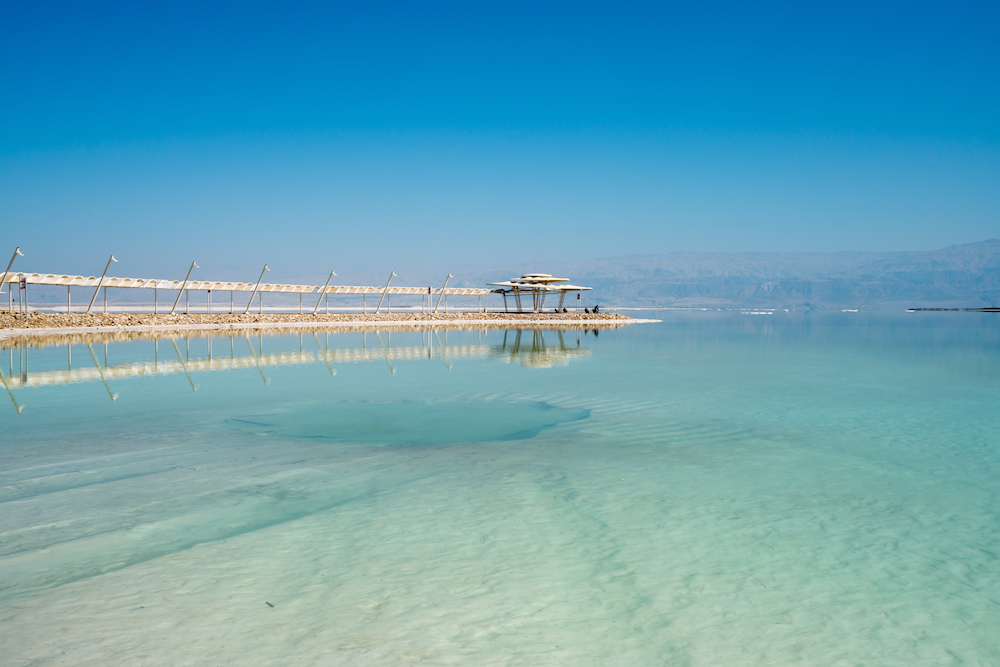
A trip to Israel wouldn’t be complete without a stop at one of its most famous attractions, the Dead Sea. One must try swimming (or more accurately, floating) in the extremely salty water, as well as applying thick layers of the sea’s famous mud, sold around the world for its dermatological benefits. The mud is also a centerpiece of the treatments found at the numerous luxury spas located along the Dead Sea, perfect after a long day exploring the surrounding desert.
Spend a night or two in Ein Bokek, located on the shores of the inland ocean, and stay at one of its many resorts—the ideal home base for adventures in the surrounding area. High-end Israeli hotel chains such as Leonardo, Daniel, and Herods all have properties in the town, but you’ll also find unique accommodations like the Moroccan-inspired Oasis Dead Sea Hotel.
—Keith Gordon
Eilat, Israel’s Ultimate Resort Town
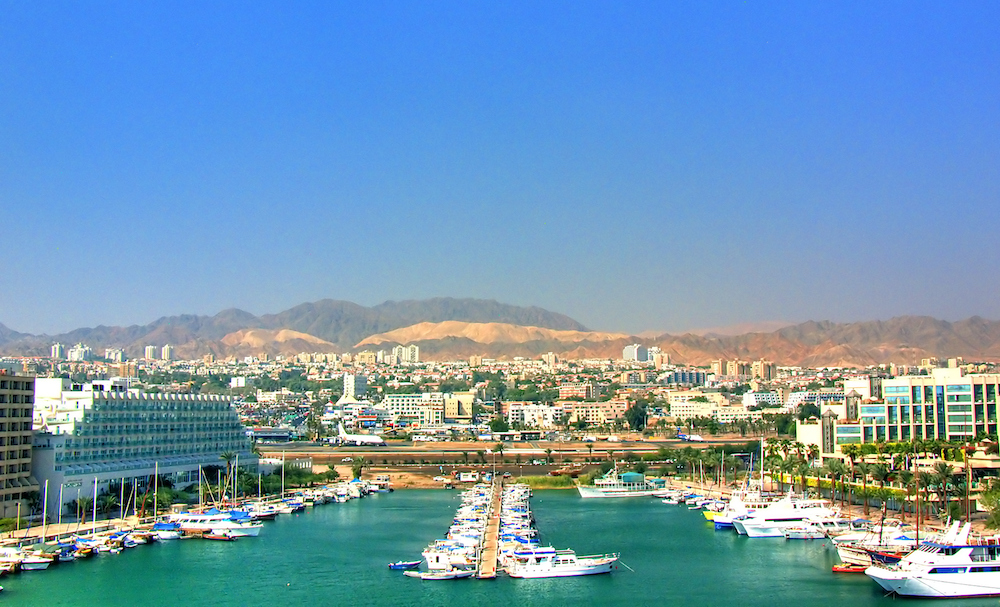
Israel’s gateway to the Red Sea, Eilat is a resort town unlike any other in the country. Visitors can escape into the nearby arid mountains for world-class hiking and cycling outings, but the real draw of Eilat is the Red Sea, with crystal-clear turquoise water chock-full of vibrant and exotic marine life.
As kite-surfing adrenaline junkies zoom across the surface of the water above, divers can explore some of the most appealing coral reefs on earth, teeming with technicolor fish and other sea creatures. Get even closer to these animals at Dolphin Reef, where bottlenose dolphins interact with their human guests, or grab a scuba tank to explore the wreck of the Satil, a warship sitting 25 meters below the water, just off Coral Beach.
The must-visit Underwater Observatory Marine Park boasts a large shark pool, sea-exploration programs in the nearby Red Sea, and even an underwater observation center, which provides intimate, close-up views of the marine life that inhabits the area. With a beachfront lined with luxury hotels, and a wealth of outdoor activities to pair with those five-star accommodations, Eilat is the ideal resort town for a country of active and adventurous residents—and visitors.
—Keith Gordon
